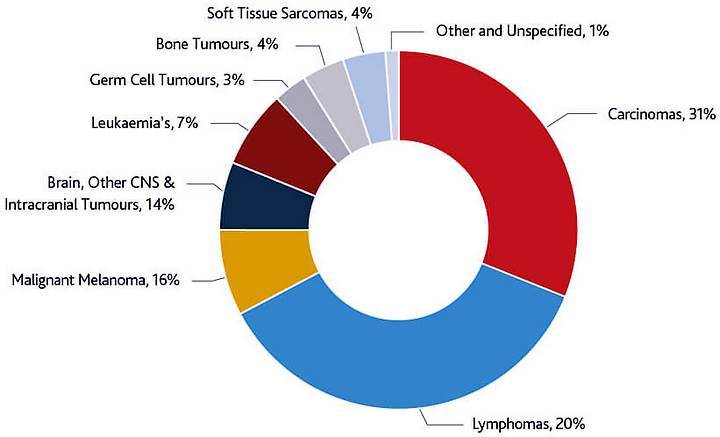
Most cancers are thankfully rarer in children and young people. They still happen and the chart above shows predominant types, for females aged 15 to 24.
We chose this chart to highlight the cause of a dangerous form of skin cancer, melanoma, which is third on the list. The quest for a tan is a more common pursuit for females than males, so skin cancer rates are higher.
Even so, young males are still at notable risk and for both sexes, melanoma incidence has increased in recent times. A combination of body image pressure and changing habits, such as more travel to sunny locations.
In a good number of cases, the problem is spotted early and can be treated by surgery alone. In others, the cancer will have spread and invasive treatments such as chemotherapy, or radiotherapy may be required.
This treatment often saves lives, which is the key point, although there can be a price to pay as time goes on.
The View Downstream
The University of North Carolina recently analyzed data from over 6000 cancer survivors between 15 and 39, along with their siblings and a substantial number of people in the same age group without cancer.
Risk of future hospitalisation was almost twice as high for cancer survivors, compared to their siblings, or others. The incidence of infectious diseases, nervous system and circulatory disorders, skin, or respiratory conditions was equally high.
All the above were greater for cancers such as leukemia but still an issue with melanoma. We should add that digestive, musculoskeletal, genitourinary, or psychological issues were also identified as an issue, in this study and others.
Indirect side effects can also feature, on social and sexual development, reduced educational performance, or career progression.
Newer cancer treatments hold the prospect of reducing long term harm but will not always be the cure of choice and even then, could offer ongoing downsides. The solution is to avoid them where possible.
Good follow up care will help with a number of conditions, or further incidences of melanoma, where long term survival rates have improved. This does however mean more people are at risk of problems later in life.
The first solution is of course to avoid being inflicted with skin cancers as far as you can, through good sun awareness and protection. Where that hasn’t happened, there is still a key factor to consider.
Early detection of skin cancers brings high cure rates and far less invasive treatment, long term impact, or disruption to life are avoided. For a type of cancer which is normally visible, this can be achieved.
Check your own skin regularly and see a specialist dermatologist if you suspect a problem. They are also available for skin cancer screening at any time, an annual check is not simply for older people.
The greater life span which being young offers us requires thought for the future, including care for the only body we have to live in.
